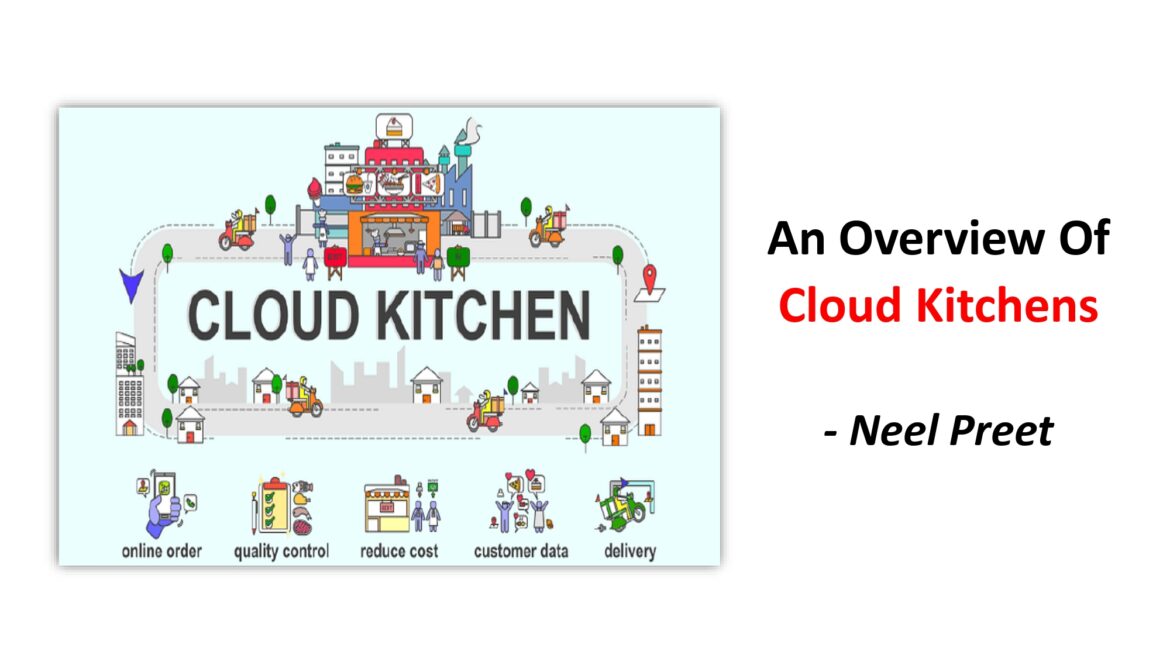In the last couple of years, we have witnessed a wide scale, forest fire like circulation of the concept of Cloud Kitchens across India. Be it the metro cities (Delhi, Mumbai, Kolkata, Chennai, Bangalore & Hyderabad) or the state capitals (Lucknow, Patna, Ranchi, Gandhinagar, Jaipur, etc.) or even the small towns (Kanpur, Jamshedpur, Panipat, Kochi, Vijayawada, etc.) in India, the trend of ‘Cloud Kitchens’ have started everywhere. Moreover, why a trend like this shouldn’t be followed across the country, after all this is such a wonderful concept, which gives rise to a marvellous earning mechanism too!
Well, with the rising competition and with the ever-growing technology, the food industry has always been under multiple technological innovations. Cloud Kitchen is one such concept that has sneaked in the food industry recently and has taken not just the Indian but also the Global restaurant industry by storm. Reports suggest that the Cloud kitchen concept is marching ahead at the highest CAGR (Compound Annual Growth Rate) among the other segment in the restaurant industry and is considered as the smarter way to run the restaurant business.
What is a Cloud Kitchen?
Now, before going any further let us go over the concept of the ‘Cloud Kitchens’ first. So, what is a Cloud Kitchen? Well, a ‘Cloud Kitchen’ is a concept of delivery-only restaurant with no physical space, no dine-in space, or takeaway counter. It is a restaurant kitchen, which accepts delivery-only orders without a traditional restaurant or dining-in facility. Just an operational kitchen for the preparation of food that functions as a production unit. Cloud Kitchens are the commercial facilities, which are built with the purpose to produce food specifically after considering the market potential of the delivery-only segment.
Moreover, in these Cloud Kitchens, one will not witness that there is no fancy infrastructure, no waiters, no tables, no furniture and absolutely nothing at all. Customers can place their orders online through the online food aggregator apps or the restaurant app, hence, the name cloud kitchen. These kitchens are sometimes also known as Ghost Kitchens, Dark Kitchens, or Virtual Kitchens. Interestingly, with several names to this concept of Cloud Kitchen, there are several ‘Cloud Kitchen Business Models’ too!
Different Cloud Kitchen Business Models
So, what are the different Cloud Kitchen Business Models? All cloud kitchens have the same operational process, wherein an order is received, and food is prepared and delivered at the very doorstep of the customers. However, there is a difference in the way their operations are executed. Well, there are different business models for these delivery-only restaurants and they are as follows –
1) Standalone Cloud Kitchen: These are the independent kitchens where one brand owns or rents a single kitchen location without offering a dining space. These restaurants generally focus on a single type of cuisine and rely on different food aggregators or delivery channels!
2) Multi-Brand Cloud Kitchen: In this business model, multiple brands under one parent company share one kitchen, keeping operational costs down. Every brand/restaurant is cuisine-specific and caters to different customer needs sharing a large kitchen space, under one roof.
3) Commissary (Aggregator) Kitchen: Leveraging on the robust online delivery market, many delivery aggregators have kicked off their own cloud kitchen models, offering empty kitchen space and minimal infrastructure that restaurant businesses can rent. Restaurants can use these fully stacked or a shell kitchen depending upon their requirement on a shared basis. So basically, many small kitchens can operate within one larger kitchen space, with multiple restaurant brands cooking at any given moment.
4) Outsourced Cloud Kitchen: As the name suggests, this model allows a restaurant to outsource almost any or every process, except the finishing touches. The chef provides the final touch before the food goes out for delivery. Rest all the operations, from food preparation to customer-facing operations are outsourced.
Also Read: Progresses Made By The Human Civilization
5) Co-Working Cloud Kitchen: A co-working cloud kitchen is a large kitchen infrastructure, which multiple restaurant brands can rent and run operations from. These kitchen spaces are located at strategic locations and have individual kitchen units for each brand, fitted with the necessary equipment and utilities!
Well, these were the various business models that provides the right mechanism for the Cloud Kitchens to operate and grow; now let us have a look over the various Advantages of the Cloud Kitchens. Cloud Kitchens offers the following advantages over traditional restaurants –
Advantages of the Cloud Kitchens
1) Low Operational Costs: For a cloud kitchen, a lot of the operating costs incurred by traditional restaurants are done away with. Be it infrastructure costs, overheads cost, logistics cost, etc., cloud kitchens theoretically incur lower costs and have an edge over the brick and mortar restaurant.
2) No Investment Business: A cloud kitchen can be designed to be a very lean operation with less staff and infrastructure, enabling a low-risk venture. The initial investment required for starting a cloud kitchen is quite less as compared to a brick-and-mortar restaurant.
Also Read: Indian Real Estate Investment Market In 2022
3) Lesser Human Resources Required: Since you do not need a restaurant at a prime location or hire staff to serve customers, it takes only one-third of the time and resources to open a cloud kitchen as compared to a traditional dine-in restaurant.
4) High Profit Venture: It is possible to start a cloud kitchen with less staff, minimal kitchen equipment, no furniture cost, no décor cost. Thus, it gives restaurant operators the flexibility to experiment, cut down on the overheads, and quickly reach operating breakeven making it a profitable venture!
5) Easy Expansion: As the operation is just limited to a kitchen, the total Capex cost is much lower than a full-fledged restaurant. Restaurants can leverage the scale of cloud kitchens to test new geographies and consumer adoption without investing in infrastructure!
Well, these are just one side of the coin, if things looks so bright & sunny then just do not fall for the shine. As there is another side to the coin too. Just like the advantages, the Cloud Kitchens have certain disadvantages too. So, let us go over the Disadvantages of Cloud Kitchens too –
1) Building Brand: Since it is an online-only venture with limited customer interaction, cloud kitchens might find it difficult to build their brand at first. With no physical location, cloud kitchens are competing exclusively in a crowded online marketplace. Customers are less likely to become regular and will not be able to connect with a particular restaurant brand because they are ordering from a third-party app with various restaurants listed.
2) Dependence On Food Aggregators: Unless a restaurant has its own delivery app, the access to the customers is through third-party food aggregators like Zomato, Swiggy, Eat Club, Eat Sure, etc. These aggregators charge between 15% and 35% to restaurants as commission. Ideally, the restaurant does not mind the commission due to the order volumes generated by these services. However, they often are worried about the impact high commissions can have on their business in the long term!
3) Masked Customer Data: Dealing with third-party food aggregators would leave the restaurant with no customer data of their own. The restaurant would be provided masked customer data, which means they would not know who their customers are. This influences sales in the longer run, as there would be minimal customer retention!
Nevertheless, there is a very big good news with the concept of the Cloud Kitchens. As there is a wide scope of Business Growth, when it comes to the Cloud Kitchens.With increased internet penetration and the age of millennials with disposable income demanding digital, mobile-friendly solutions the trend of virtual restaurants (delivery-only brands) has lately garnered attention. Cloud Kitchens have evolved the traditional restaurant industry, just like the pizzas and the burgers have. In addition, this is more likely to grow with the next generation, who has grown up with the internet & smartphones along with the advances in kitchen automation and the soon to be launched drone delivery system.
Therefore, many restaurants are now moving towards cloud kitchen operations. Several tech platforms are helping these restaurants, making it much easier for their customers to order, pay online and get the food delivered to their homes at the click of a few buttons. Well, the Cloud Kitchen business still has a huge untapped potential, with minimum risks involved. Undoubtedly, this is one of the safest bids, if you are planning to invest in the food industry!
Written By NEEL PREET – Author of the Books, Voice From The East (2016); Journey With Time Place And Circumstances (2018) & Indian Defence Files (2021).


